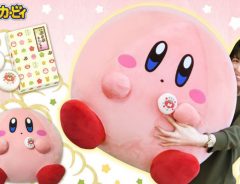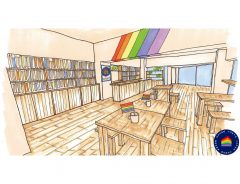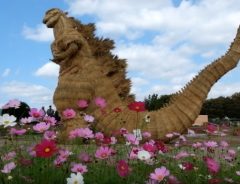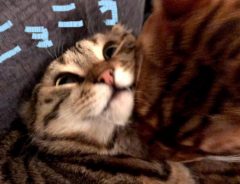
Kawanabe Kyōsai, Meikyo Yamato-damashii shinpan (Famous mirror: the spirit of Japan, newly published), 1874, Color woodblock print. Israel Goldman Collection, London Art Research Center, Ritsumeikan University
New Exhibit In Tokyo Explores The Fantastic Work Of Kyōsai–One Of Japan’s Greatest Artists
Related Article
-

This New Giant Kirby Plush Comes With Kirby-Themed Japanese Sweets
-

Japan’s first permanent LGBTQ centre set to open in Shinjuku
-

It’s Not Szechuan Sauce, But Chicken McNuggets Are Getting Wasabi And Teriyaki Sauces In Japan
-

10-Meter Straw Godzilla Makes Special Appearance At Annual Harvest Festival
-

These Cat Siblings Sometimes Have A Little Too Much Love For Each Other
-

What is a remote wedding? Japanese couples are now choosing a ceremony online for their weddings


It's nearly impossible to discuss Japanese art without mentioning the name Kawanabe Kyōsai (1831-1889). One of Japan's most unique and prominent painters, whose art may be distinguished in part thanks to his living through the tumultuous last days of the Tokugawa regime and into the Meiji period. In many ways, his paintings, which range from rich Buddhist imagery to satirical animal caricatures, can be considered a shining example of the creativity and humor produced from uncertain times.
Kawanabe Kyōsai, Hell Courtesan and Ikkyu, 1871-89, Ink and color and gold on silk, Israel Goldman Collection, London Photo: Art Research Center, Ritsumeikan University
Kyōsai studied under the tutelage of ukiyo-e master Utagawa Kuniyoshi and then in the Kano School, where he developed techniques that would help him paint in his particular style, which depict clever animal symbolism, Japanese mythology, and even comical "fart battles." The recently opened "This is Kyōsai!" exhibition at the Bunkamura Museum in Shibuya provides a brilliant look at all the eclectic stylings of one of Japan's master painters from the prized collection of Israel Goldman. The variety of artwork and attention to historical detail makes it a must-see for any art fan in Japan.
Kawanabe Kyōsai, Skeleton Shamisen player in top-hat with dancing monster, 19871-89, Ink and light color on paper Israel Goldman Collection, London Photo: Art Research Center, Ritsumeikan University
One of the highlights of the exhibit is the high quality foreign language (particularly in English) presentation that has been prepared. Each piece comes with not only a detailed explanation of the art work, but also symbolism and historical references in the work that add depth. A very useful multilingual tablet guide was also provided, and helped explain the nuances of the art as well as the satirical meanings of Kyosai's famous animal caricatures.
Kawanabe Kyōsai, Daruma, 1885, Ink and light color on paper Israel Goldman Collection, London Photo: Art Research Center, Ritsumeikan University
Kawanabe Kyōsai, Two crows with karasu-uri (“crow gourd”) 1871-89, Ink and color on silk Israel Goldman Collection, London Photo: Art Research Center, Ritsumeikan University
Information about the exhibit can be found below. If you have even the slightest interest in Japanese art, we highly recommend a visit to the Bunkamura Museum of Art.
Thu, February 23 - Sun, April 16, 2017
The Bunkamura Museum of Art
2-24-1 Dogenzaka, Shibuya-ku, Tokyo 150-8507
Tel: 03-5777-8600
https://www.smart-museum-bunkamura.jp/kyosai/highlights/